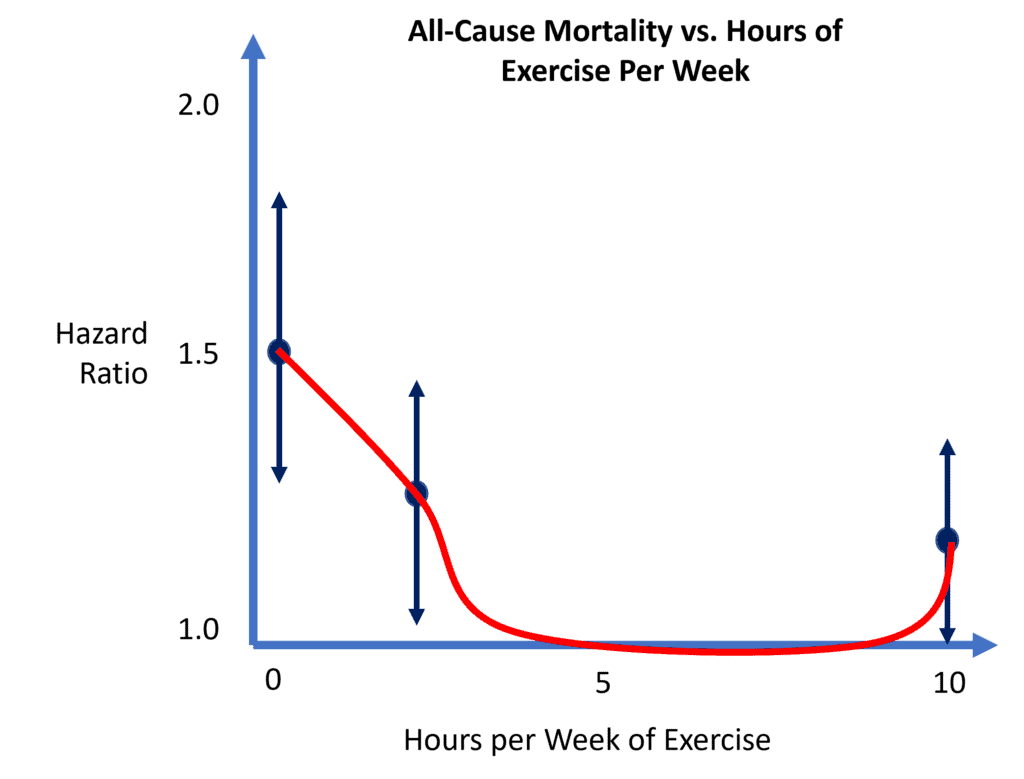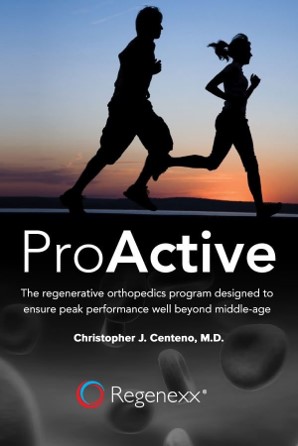Too Much of a Good Thing?

Credit: Shutterstock
My mother used to say, “everything in moderation”. This is what a new study seems to say about exercise. Can too much exercise be a problem for your body? Let’s dig in.
How Much Should You Exercise?
The current US physical activity guidelines state that (1):
“Adults should do at least 150 minutes to 300 minutes a week of moderate-intensity, or 75 minutes to 150 minutes a week of vigorous-intensity aerobic physical activity, or an equivalent combination of moderate- and vigorous-intensity aerobic activity. They should also do muscle-strengthening activities on 2 or more days a week.”
Hence, all of that looks like this:
-An hour of walking a day 3-5 times a week
-Aerobic activity like vigorous hiking (uphill), running, tennis, soccer, or biking for 45 minutes 2-4 times a week
-Weight-lifting 2 times a week
How many Americans get any type of physical activity? In a 2016 study, 28% of Americans had no exercise (2).
The New Research
The most recent study was performed based on data from the Copenhagen Heart study in Denmark (3). The authors looked at the number of hours of activity in almost nine thousand adults (n=8,697) The duration (minutes per week) of sports activities was recorded for tennis, badminton, soccer, handball, cycling, swimming, jogging, calisthenics, health club activities, weightlifting, etc… Like most researchers, they expected to find that more exercise was better, but instead, they found this:

This is a graph of “All-Cause Mortality” (meaning death from any medical cause) versus the number of hours of exercise per week. Everything here is compared to the lesser risk of dying if you regularly exercise. Note that there’s about a 50% greater chance (Hazard Ratio of 1.51) chance of dying if you exercise zero hours per week. If you get about two hours, that goes down to about a 25% greater risk. If you exercise from about 2.5 to 8-9 hours a week, then there is no added risk. However, check out the far right, which shows about a 20% greater chance of risk of all-cause death if you exercise 10 hours a week or more! Yikes! I bet you nobody in that 10+ hours a week category believes they’re at greater risk of death!
Why Is This Happening?
My best, educated guess is that you have people in the 10+ hours group with a heart problem that’s made worse by excessive exercise. Meaning some small portion of this group is dropping dead because that problem is laid bare by all of that physical demand. I would also imagine that there are most people in the 10+ hour group who are not impacted by all of this extra exercise. For those who exercise moderately, these problems aren’t exposed. Those who don’t exercise get bit even harder by all of the bad things that happen to the body when there’s a lack of physical activity (weight gain, high blood pressure, bad blood sugar control, poor heart muscle condition, etc…).
What If I Can’t Exercise?
Many people as they age get slowed down by the accumulated injuries and the bad surgical decisions of a lifetime. They literally can’t get it done anymore because of pain. If you’re in that camp, read my book ProActive to figure out how to get back to regular physical activity by using precise orthobiologic procedures:
The upshot? My mother was right (like many are) that too much of a good thing can be a bad thing. Everything in moderation is a great rubric to live by! So if you’re not exercising, get out there and get your body fixed so you can. If you’re going overboard with the exercise, listen to the words of Faith Centeno (my mother) and cut back a bit!
_______________________________________________________
(1) Piercy KL, Troiano RP, Ballard RM, Carlson SA, Fulton JE, Galuska DA, George SM, Olson RD. The Physical Activity Guidelines for Americans. JAMA. 2018 Nov 20;320(19):2020-2028. doi: 10.1001/jama.2018.14854. PMID: 30418471.
(2) Watson KB, Carlson SA, Gunn JP, et al. Physical Inactivity Among Adults Aged 50 Years and Older — United States, 2014. MMWR Morb Mortal Wkly Rep 2016;65:954–958. DOI: http://dx.doi.org/10.15585/mmwr.mm6536a3external icon.
(3) Schnohr P, O’Keefe JH, Lavie CJ, Holtermann A, Lange P, Jensen GB, Marott JL. U-Shaped Association Between Duration of Sports Activities and Mortality: Copenhagen City Heart Study. Mayo Clin Proc. 2021 Aug 17:S0025-6196(21)00475-4. doi: 10.1016/j.mayocp.2021.05.028. Epub ahead of print. PMID: 34412854.

NOTE: This blog post provides general information to help the reader better understand regenerative medicine, musculoskeletal health, and related subjects. All content provided in this blog, website, or any linked materials, including text, graphics, images, patient profiles, outcomes, and information, are not intended and should not be considered or used as a substitute for medical advice, diagnosis, or treatment. Please always consult with a professional and certified healthcare provider to discuss if a treatment is right for you.

